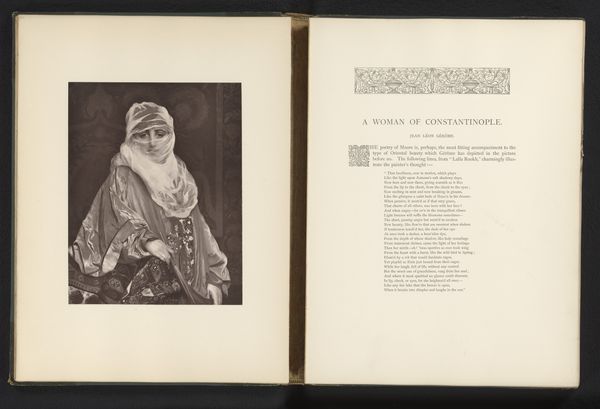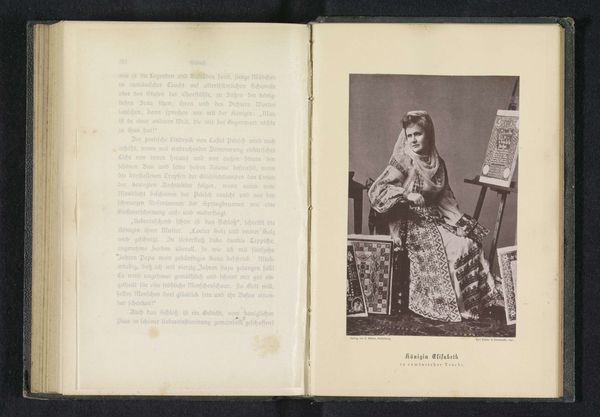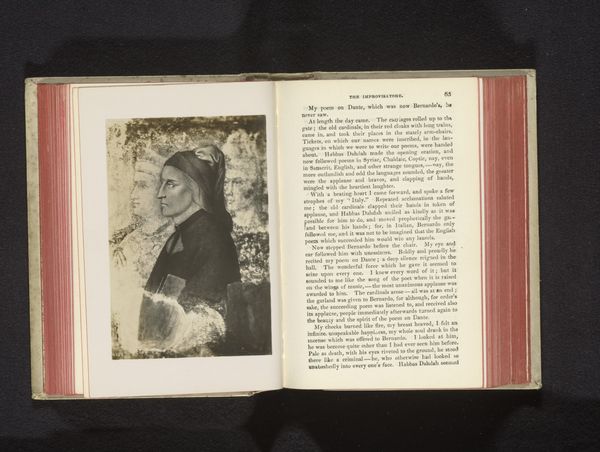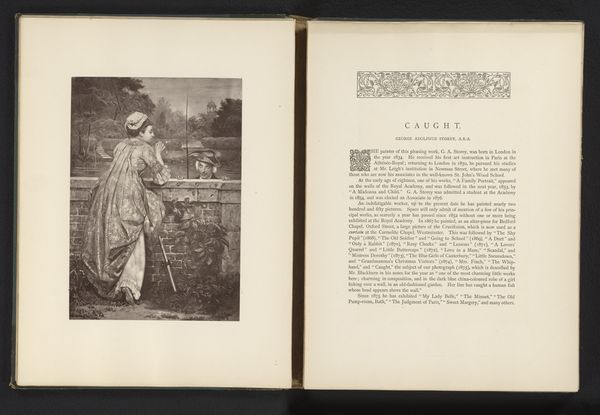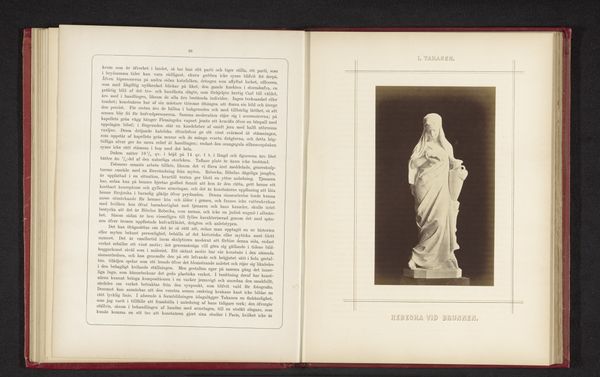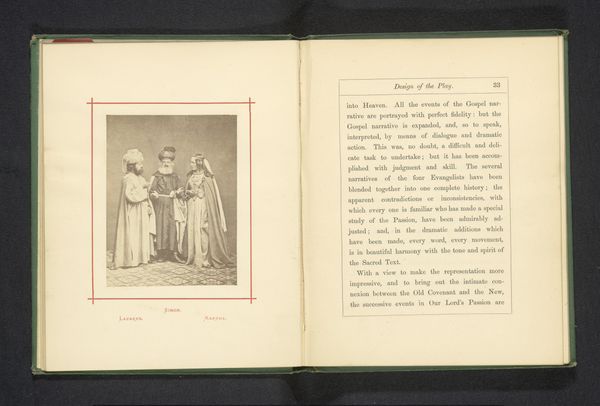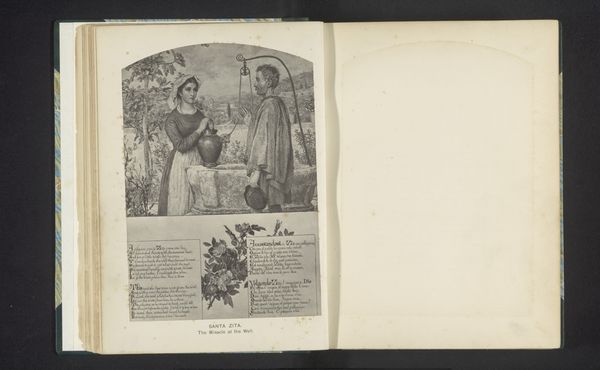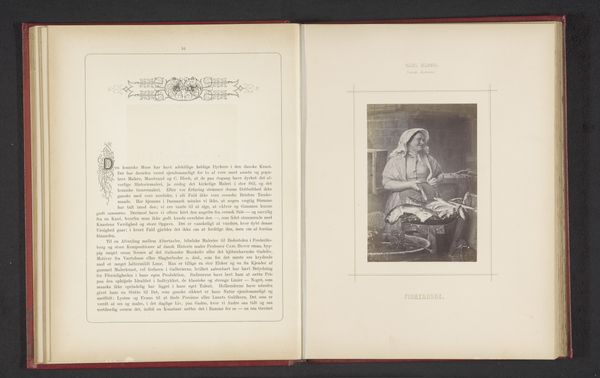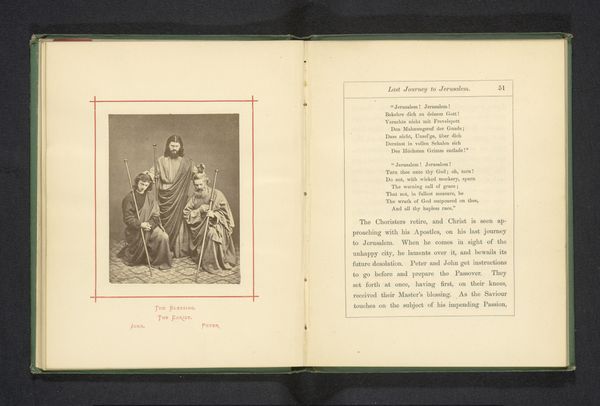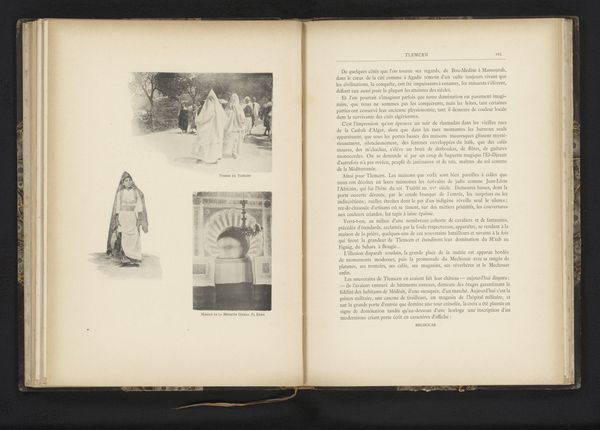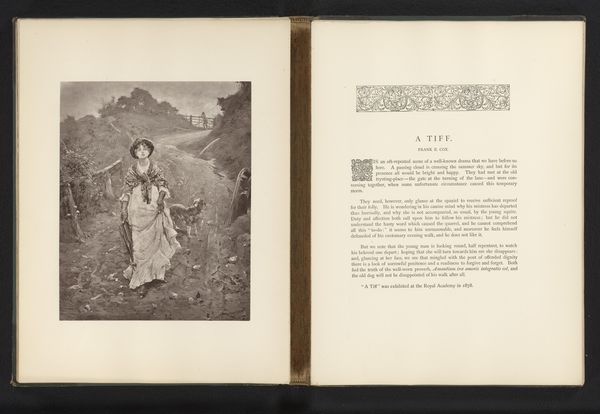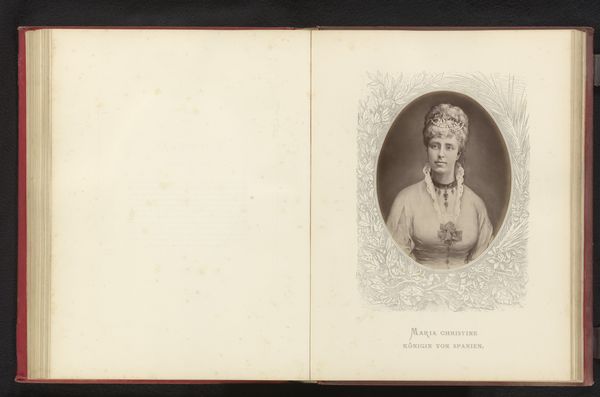
print, photography
#
portrait
# print
#
classical-realism
#
photography
#
orientalism
Dimensions: height 245 mm, width 160 mm
Copyright: Rijks Museum: Open Domain
Curator: Looking at this, I'm struck by the somber mood it evokes; the composition is vertically-oriented with simple lines. Editor: That's quite interesting. We're viewing a photographic print reproduction of a painting by Raffaelo Sorbi, entitled "Reproductie van een schilderij van Omphale door Raffaelo Sorbi", dating back to before 1879. Considering Omphale's position in Greek mythology, a queen who enslaved Hercules, doesn't this depiction of her seem unexpectedly subdued? Curator: Subdued, yes, but consider the visual elements. The way the light drapes her classical dress, its texture appearing almost like raw spun cloth, suggests more about the societal constraints placed on women and even on the depiction of heroic masculinity at this time than the myth. What materials went into making the print, and how did this influence how the original oil may have been interpreted? Editor: The medium, photography and printing techniques available then, are really critical to understanding its circulation and impact. The fact that it is printed makes it so much more accessible. Does that democratisation diminish or expand its meanings to its consumers? This wasn't created as art in a modern sense as a unique, pristine object but to show an ideal. It emphasizes how art becomes material and social when it changes locations or form. Curator: Indeed. Consider the socio-political context, also. A female monarch owning men, her sartorial dress signaling a place of power that nevertheless remained vulnerable given societal restrictions, could signal diverse contemporary issues of womanhood across racial boundaries within both colonizing and colonised countries. Editor: It feels more loaded with complexity now, seeing it through your analysis. It speaks not only to mythology or simply art, but how these stories reflect and refract complex sociopolitical elements during the era. I keep imagining the different papers, toners and techniques they would use to give that effect and how it would become such an available yet seemingly artistic expression. Curator: Absolutely. The piece prompts us to reconsider historical power dynamics through contemporary lenses. Editor: Precisely. Understanding both its making and its contexts elevates a single image into a broader cultural dialogue.
Comments
No comments
Be the first to comment and join the conversation on the ultimate creative platform.

